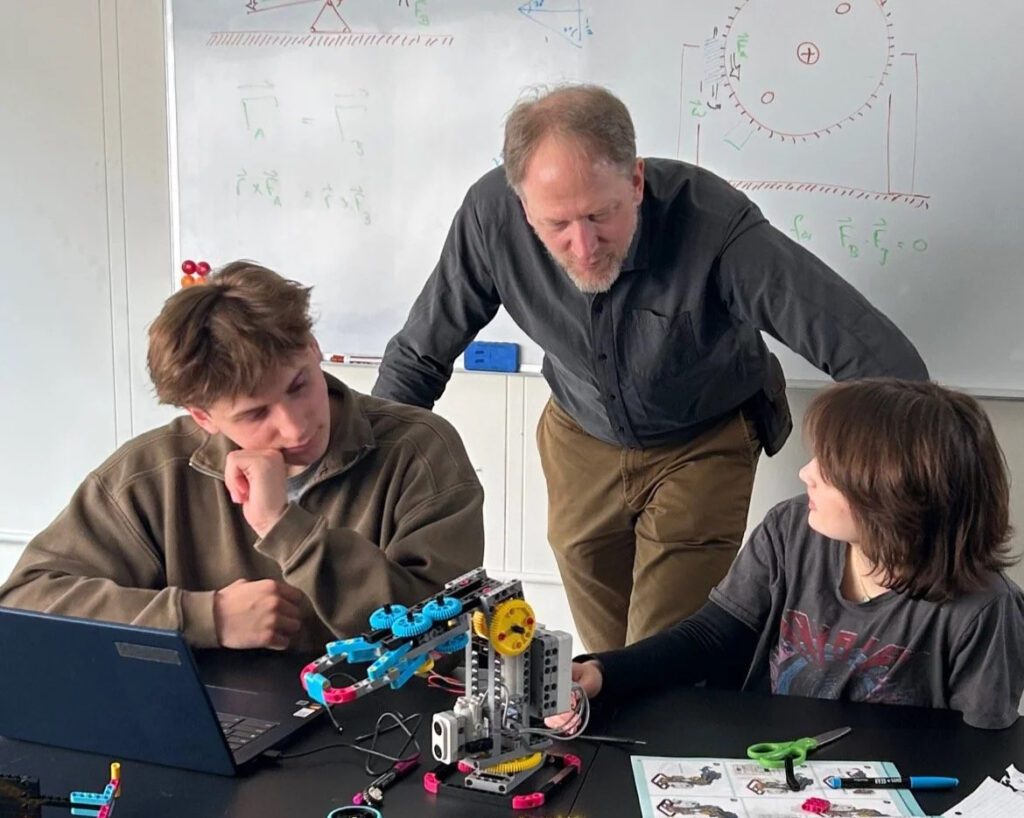As arts programs face unprecedented cuts and traditional education often leaves students disengaged, the New England School of the Arts (NESA) in Lebanon, N.H., stands as a beacon of innovation. Founded during the pandemic by Jennifer Chambers, a former educator at Hanover High School, NESA has spent its first two years proving that when the arts take center stage, academic excellence follows naturally.
“The seed of NESA really came from watching art programming being cut left and right all over the country during the pandemic,” Chambers explained. “We wanted to create a school where the arts were not an afterthought or something that could be shoved outside school hours, but really at the center of the programming.”
What distinguishes NESA is its integrated STEAM curriculum — Science, Technology, Engineering, Arts, and Mathematics — where subjects flow seamlessly together through project-based learning. Students discover physics through ballet, understanding the angles and forces at work in dance, then apply those same mathematical concepts to designing theatrical sets or creating scaled bedrooms for Greek gods as part of their study of the “Odyssey.”
“We’re building curriculum as a team,” Chambers said. “You’re not going to go to your science class and have your math teacher not know what’s happening. They know exactly what’s happening, and they’re working to cross-connect and team teach those concepts.”
This collaborative approach has transformed how students view learning itself. STEAM teacher Matthew Huyck says he witnessed a remarkable shift during the school’s inaugural year. When he surveyed students about their feelings toward mathematics at the beginning of the year, he said “indifferent” was the most common response. By year’s end, half the students wanted to accelerate their math progress, with three planning to complete calculus before graduation.

Math and science instructor Matt Huyck works with students on a robotics design. Courtesy of Jennifer Chambers
The magic happens because NESA’s curriculum extends far beyond classroom walls. Students take monthly expeditions to the Stewardship Center in Pike, N.H., connecting mathematical and scientific concepts to real-world applications on ropes courses. They learn from drone expert Tom Frawley about mapping and search-and-rescue operations, knowledge that directly connects to their classroom geography work. These aren’t field trips — they’re integral parts of an education that sees learning everywhere.
The afternoon programming offers something truly unique in the region. While students at most schools finish their arts training after school hours, often staying up until 1 a.m. to complete homework, NESA students take ballet during the school day, receive private voice lessons, and work directly with professional artists and Dartmouth professors. The faculty includes two Dartmouth professors — Kassady Small and Joseph Cooley — providing college-level instruction with an extraordinary 1:2 teacher-to-student ratio.
The school’s reputation for both excellence and accessibility has earned recognition from notable figures, including Vermont’s own Grammy-nominated musician Noah Kahan, who has praised NESA’s approach to creative education.
Learn more about the school at https://www.nesarts.org/
For more on this, please see our August 14 edition of the Vermont Standard.